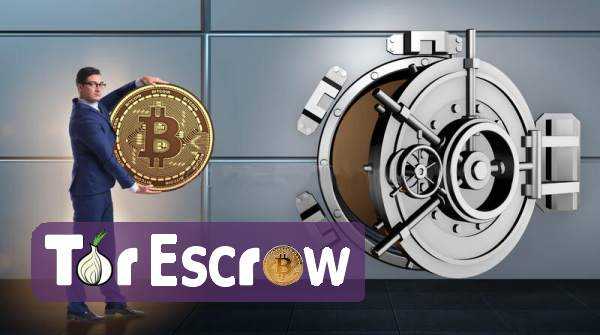
A bitcoin escrow is a safe deposit box where you can securely store bitcoin while an online transaction is completed.

Tor Escrow helps you secure your bitcoin while conducting business online by enabling you to store the bitcoin in a safe deposit box while the vendor ships the merchandise or provides the services.
Most vendors do not trust anonymous customers and they require proof of funds before they ship the goods or provide the services.
Because screenshots can be easily photoshopped, vendors do not trust pictures as proof of bitcoin.
One could easily add a few zeros to trick a vendor into thinking he has far more bitcoin than he has.
Because pictures can not be trusted in the anonymous world provided by Tor, a secure way of conducting business is provided by the Tor Escrow service.
The anonymous customer creates an escrow transaction, and put a description of what he expects to receive from the vendor, along with the price and how long the delivery should take.
The customer is given a master code for the escrow transaction, this is to be kept private and safe, and he is also given a read-only view code for the escrow transaction, this code is to be shared with the vendor.
The vendor can view the escrow transaction using the read-only code. Once he approves the description of the goods or services to be delivered, the price and the delivery time, the vendor gives ok to the customer to deposit bitcoin into the escrow.
The customer stores the bitcoin in his escrow transaction by using the secure and anonymous bitcoin wallet address provided by the Tor Escrow service.
The vendor can see that the bitcoin is deposited on escrow and he proceeds with shipping the goods or delivering the service.
After the customer receives the goods or the service, he can click a link to release the funds from escrow to the vendor.
If the goods or services were not received, or if they were not matching the description, the customer can request the funds back to his external bitcoin address.
A Tor Eescrow administrator will review the escrow transaction to see if the request of the customer to receive the funds back is legitimate or not, and if is legitimate the funds will be sent back to the customer.
If there is proof that the goods or services were received and match the description, as well as the delivery time, then the funds will be sent to the vendor.